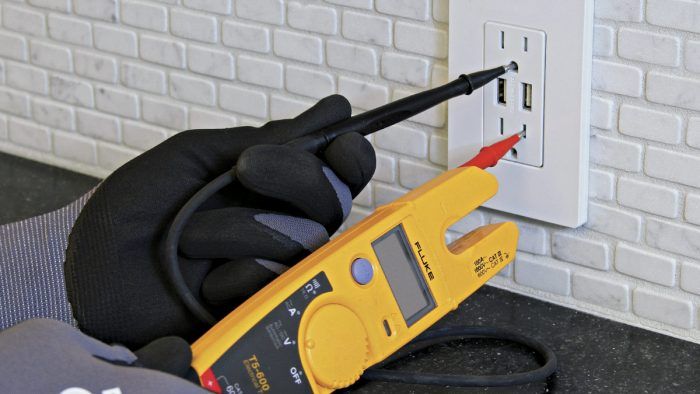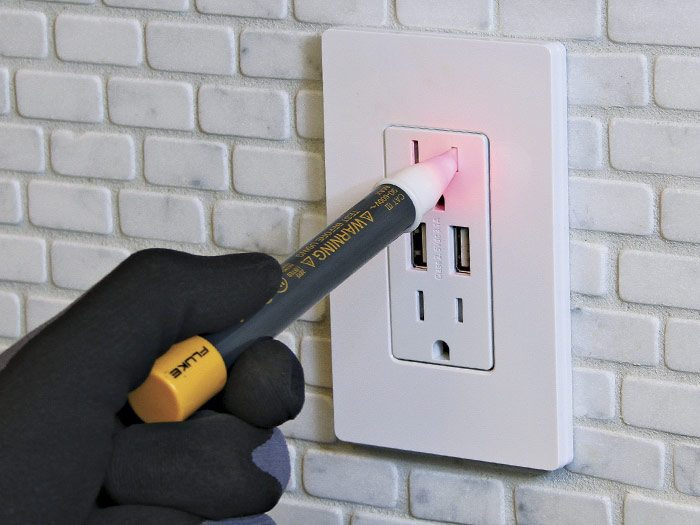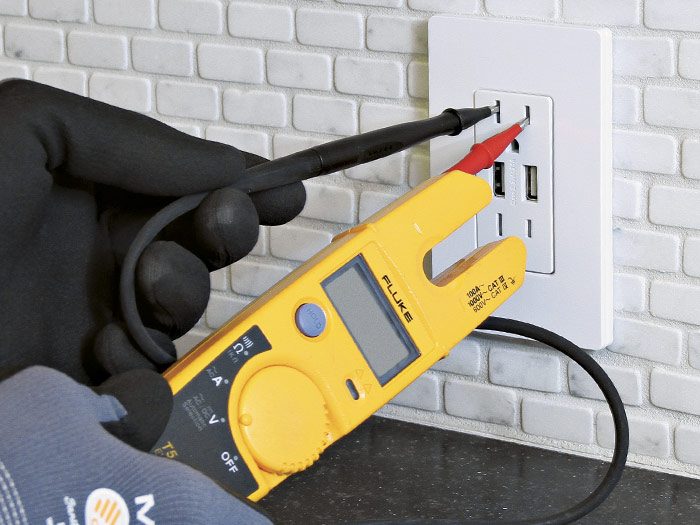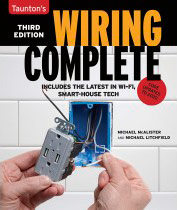Testing for Voltage
Use both noncontact testers and probe testers to verify that power is off.

Before doing electrical work, always turn the power off to the circuit. There are several voltage testers you can use to verify that the power is off, but the most common are noncontact testers and probe testers. We recommend using both types.
A noncontact tester is an inexpensive battery-operated voltage tester that is generally reliable and small enough to fit in a shirt pocket. Its plastic tip glows (and it may beep, depending on the model) when the tip is brought close to or touched to a hot (energized) conductor. That is, it can “read” current through a wire’s insulation or through a cover plate. Thus you can often detect electrical current at a switch, receptacle, or fixture without removing the outlet cover.
| Trade secret: It’s possible to get shocked by touching the bare probes of probe testers. Whatever voltage tester you use, always hold it by its insulated shaft. |
Each time you use a noncontact tester—or any voltage tester—test that it’s functioning properly first on a receptacle that you know is hot 1, and test it afterward as well. After shutting off power at the panel, insert the tester tip into the narrow (hot) slot of a receptacle 2. If the tester tip does not glow, there is probably no voltage present.


Follow up with a probe tester. Although a noncontact tester is good for a quick initial reading, you should follow up with a probe tester, whose probes make direct contact with conductors. To test for voltage, touch probes to receptacle slots, screw terminals, or wire ends. Because probe testers do not rely on batteries, they are more accurate than noncontact testers.
The probe tester shown here, like many multimeters, allows you to choose which electrical function to test. To see if power is present, turn the dial to V (voltage).
Insert the probe tester tips into the receptacle’s neutral and hot slots 3. Next insert the tips into a grounding slot and a hot slot 4. This test should protect you in case the receptacle was incorrectly wired. The tester screen should indicate no voltage present.


If you need to remove the receptacle—say, to replace it—remove the cover plate and test one more time. Being careful not to touch the sides of the receptacle, unscrew the two mounting screws holding the receptacle to the outlet box. (If the box is metal, avoid touching it, too.) Grasp the mounting straps and gently pull the receptacle out of the box. Touch one tip of the tester to the brass screw terminal (hot), while touching the other tip to the silver screw terminal (neutral) 5. If the tester screen does not indicate voltage, it’s safe to handle the receptacle and the wires feeding it.

Excerpted from Wiring Complete, 3rd Edition (The Taunton Press, 2017) by Michael Litchfield and Michael McAlister
Available in the Taunton Store and at Amazon.com.






